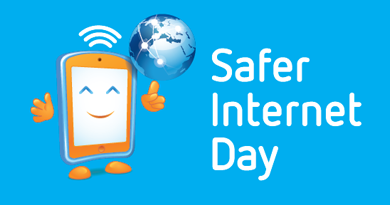This week schools and organisations got together to celebrate ‘Safer Internet Day’. It is a fantastic global initiative if it gets the conversation going and raises awareness about using technology responsibly and respectfully.
Whilst there are endless apps and extensive parental controls and filters for all different devices and gadgets, these are by no means 100% effective to keep your children ‘safe’. They are no substitute for talking to your children regularly about responsible internet use and establishing clear boundaries.
It amazes me how many parents would not let their children go out alone as it is deemed ‘unsafe’ but they often allow young children to have hours of unmonitored access to the internet where they could potentially be in far more danger in their own home.
It can feel very overwhelming to keep up with technology and how children are using it. The reality is in almost all families, the children will be one step ahead of their parents and very adept at getting around filters and parental controls if they are really determined to do so.
As parents we have a fundamental responsibility to teach our children self-regulation so they don’t grow up with technology controlling them. This can’t happen through control. One father I know admitted to sleeping with the router under his pillow to keep it from the clutches of his teen! Banning and blocking doesn’t work – the children will crave technology even more and most of them as they get older will need it to complete homework. Constant nagging, shouting, repeating, criticising and reminding is not effective either!
The key is to communicate and connect regularly with empathy and understanding so parents and children can find solutions that work for their individual family. Most kids left to their own devices simply can’t handle the allure of screens without some agreed limits and rules.
How can you handle screens and keep your children safe?
We need to understand and monitor our children’s behaviour online, just as we understand and monitor what they are doing in the physical world.
1. Be clear about what they are using screens for and how those games, apps, social media platforms work. Connect in a positive way so you understand and talk about their favourite things to do on the internet.
2. Get a realistic sense of how long in total both you and your children are spending on screens per day. Keep a digital diary for one week – you may be shocked or pleasantly surprised.
3. Set some achievable goals for managing screens. For some families it may be an issue of cutting down on use, for others it may be reducing the nagging or helping your child find other things to do.
4. Involve your child in creating some clear boundaries or a family agreement around the use of screens and write it down. These rules should include:
· What they can use screens for? (Depending on the age of your child, you may need to be very specific about which apps/sites/games they can use)
· Where screens can be used? (Always advisable to have tech-free zones like the kitchen table, bedroom or the car)
· How long they can spend on screens each day? (Are they getting enough of a balance of other activities and downtime/unstructured play)
· When are the times they can be used? (Agree on a schedule for each day, including homework, extracurricular activities, chores, seeing friends etc.)
5. Agree in advance the rewards for keeping to the rules and the consequences for not.
6. Most importantly (and equally the hardest part) be consistent and follow through with positive acknowledgement (descriptive praise) when they get things right and empathy (emotion coaching) when they don’t.
7. Brainstorm other things you can do when you are not using a screen.

